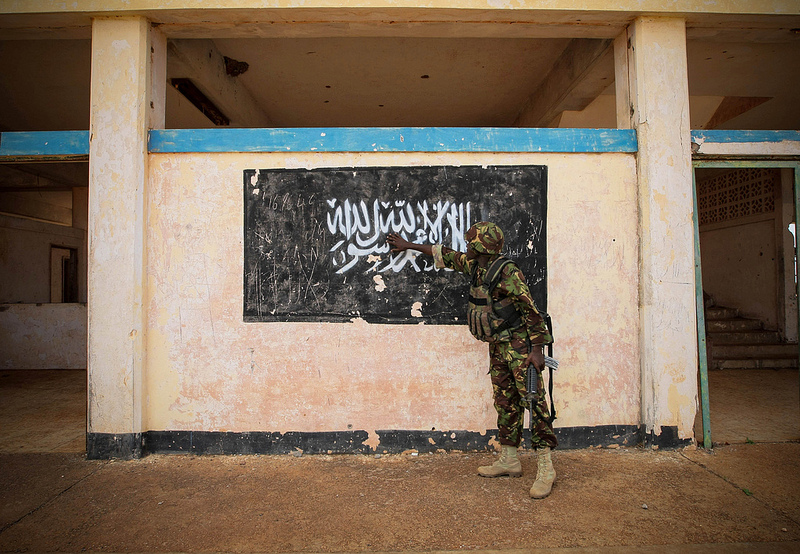It’s been a few months now since the September 2013 attacks on Westgate Mall in Nairobi and the global media has been largely silent on al-Shabaab, save for reports of a recent bomb attack in Somalia. There’s still debate about whether the militants who carried out the Westgate attack were killed or managed to elude the Kenyan security forces. But it seems clear that, in many ways, the ‘blitzkrieg’ media coverage of the event left many fundamental questions about al-Shabaab and Somalia’s political and security situation untouched. In this piece I outline some of the fundamentals about the strengths of al-Shabaab that were largely left out of most mainstream media reporting on the issue.
If the Somali Federal Government and regional and international partners are to successfully tackle al-Shabaab, they must recognise that the organisation’s strength comes from two main features: its local legitimacy and its revenue base. While I wouldn’t go as far as suggesting that the inflow of foreign recruits and senior operational capability isn’t a serious feature of al-Shabaab’s resilience, I’d argue that it’s dependent on the first two; without local legitimacy and a strong revenue base al-Shabaab’s inflow of foreign elements would be severely limited.
Although it’s far from popular in Western media, it shouldn’t be doubted that al-Shabaab has enjoyed more than marginal local legitimacy in Somalia, stemming primarily from its governance ability and its anti-foreign interventionist credentials.
As Stig Jarle Hansen argued in his recent book, the organisation has managed to provide a significant degree of governance in its controlled areas, especially in terms of policing and taxation (admittedly the bar may have been set quite low to begin with). After decades of warlord rule, predatory looting, and arbitrary executions and violations of basic human rights, al-Shabaab managed to provide the one thing that anyone caught in such an unruly situation would most welcome—relative order, although the enforcement of such order is brutal by Western societal standards. Not only that, but the organisation has also provided to a certain degree for the reconstruction of some key infrastructure, including road repairs and rubbish removal.
The popularity of al-Shabaab’s policing may have dwindled, largely due to its extreme interpretation and enforcement of Sharia, but it’s managed to maintain some level of legitimacy. This isn’t just because it provides some visible and tangible benefits, but also because local Somalis might favour even extreme and brutal governance and order to the perils of arbitrary rape, extortion and looting which characterised Somalia’s warlord-based ‘governance’ systems for almost two decades.
Al-Shabaab has also drawn a large degree of local legitimacy as the main domestic force in Somalia fighting foreign intervention. Due to a long history of foreign occupation, it should come as no surprise that Somalis are averse to foreign interference in domestic affairs. From the British, Italian and Ethiopian carve-up of Somalia in the 19th and first half of the 20th century, to the most recent Ethiopian and Kenyan military incursions in the country, Somalia has seen its fair share of foreign dominance. We should view al-Shabaab’s ability to attract followers and legitimacy as the main domestic fighting force uncompromisingly battling foreign invaders against this background. And, since 1991 most, if not all, of the dozen plus international conferences on Somalia were organised and brokered by foreign forces and neighbouring states, which again serves to add legitimacy to al-Shabaab’s portrayals of the governance institutions in Mogadishu as an illegitimate and foreign-backed government.
The second key to al-Shabaab’s strength is its revenue base. Contrary to media portrayals, the vast majority of the organisation’s funding isn’t international but local. The UN Monitoring Group on Eritrea and Somalia’s report supplements Stig Jarle Hansen’s work in highlighting the surprisingly vast monetary resources at al-Shabaab’s disposal. It appears that al-Shabaab actually raises most of its money from taxing local businesses and the charcoal trade. While there’s funding for al-Shabaab coming from the diaspora, according to the UN Monitoring Group’s report, al Shabaab raises in excess of US$25 million annually from its exports of charcoal. When the Kenyan military entered the southern port city of Kismayo in late September 2012 they found stockpiles of charcoal worth an estimated US$60-64 million. In fact, the revenue al-Shabaab makes from everyday taxation in only one town of around 60,000 people (Jowhar in the Middle Shebelle region of Somalia), is estimated at around US$750,000 a month. It’s little wonder then that the organisation can afford to pay its fighters between US$100 and US$500 a month, and as Hansen claims, $20 for a hand grenade attack, $30 for killing a soldier, and $100 for a roadside bomb or mortar attack.
Understanding the strengths of al-Shabaab could have significant consequences for the strategy used in fighting it. For example, a simple naval blockade of Kismayo could impact the organisation more severely than high-value-target drone strikes. Any military strategy that neglects or fails to appreciate the sources of al-Shabaab’s strengths runs the risk of rendering itself largely useless.
Nikola Pijovic is a PhD candidate in the National Security College at the Australian National University. Image courtesy of Flickr user Albany Associates.


